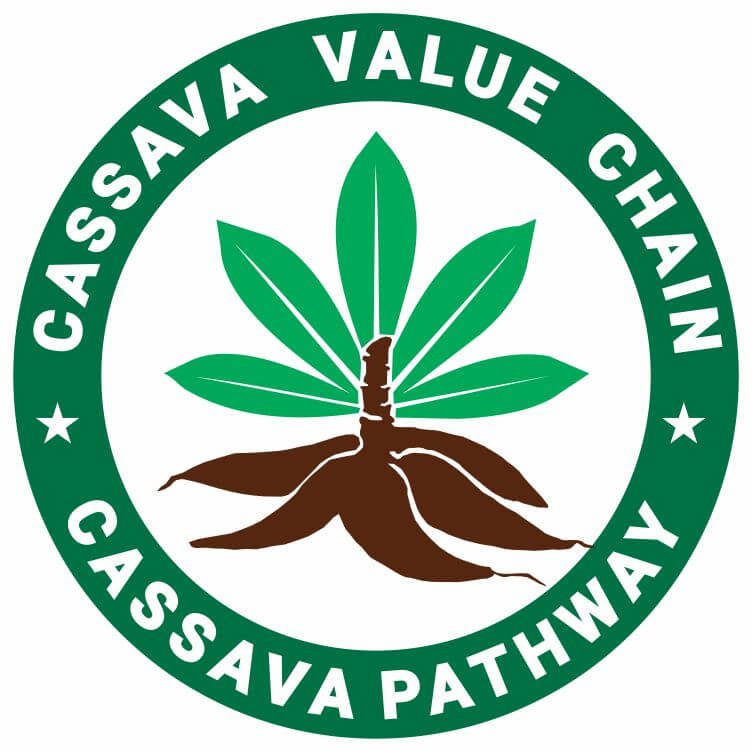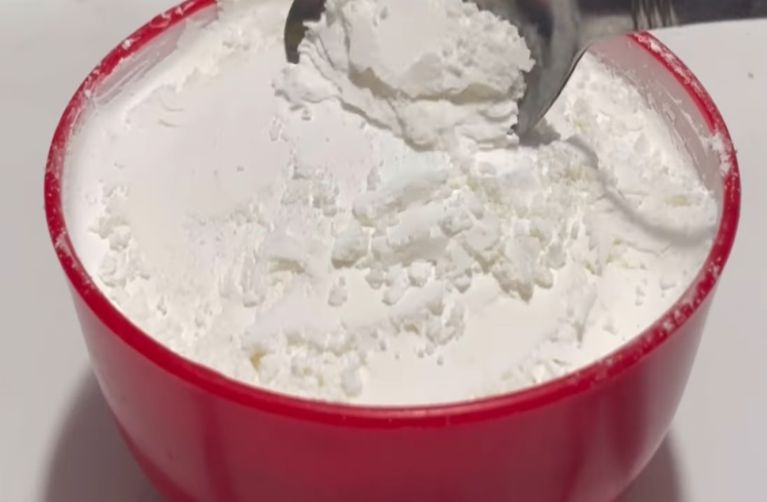What is tapioca flour, also called tapioca starch? Discover its uses, benefits, and why it’s a gluten-free staple in cooking and baking! Perfect for thickening, baking, and more.
Tapioca flour, one of the products of tapioca, is an essential ingredient in gluten-free and specialty cooking, offering unique properties that improve texture, consistency, and versatility in recipes.
Whether used in baking, thickening sauces, or crafting chewy delicacies like boba pearls, it plays a key role in various cuisines.
Unlike cassava flour, which is made from the whole root, tapioca flour is derived purely from starch, giving it a smoother, lighter consistency.
It works well in combination with other flours to create soft, elastic textures in gluten-free baked goods.
With the growing interest in alternative flours, tapioca flour has become a staple for those seeking better dietary choices without compromising on taste or texture.
Understanding its benefits and applications can enhance any culinary experience.
Related: How to Identify Tapioca from Arrowroot
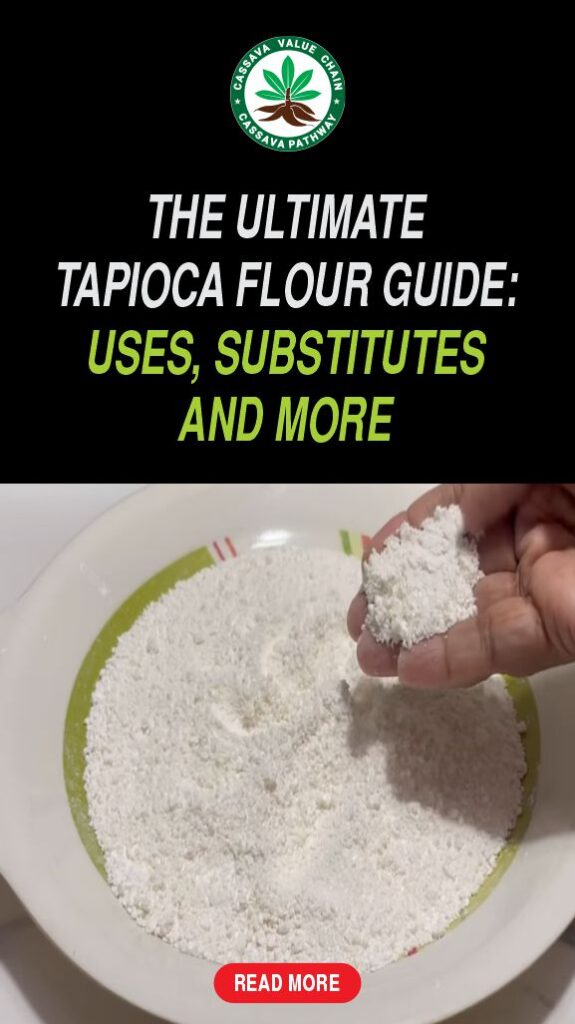
What is Tapioca Flour?
Tapioca flour is a gluten-free flour made from the starch of the cassava crop’s root. The production process involves extracting the starch from cassava, refining it, and drying it into a fine, white powder.
Known for its neutral taste and smooth texture, tapioca flour is commonly used as a thickening agent in soups, sauces, and pie fillings.
It also improves the elasticity and chewiness of baked goods, making it popular in gluten-free recipes.
While similar to tapioca starch, the terms may be used differently depending on regional labeling and processing methods.
Tapioca Flour vs Tapioca Starch
Many people think tapioca flour and tapioca starch are the same. In some cases, the names are used interchangeably, but they can have slight differences in processing.
Both are made almost entirely of starch, but tapioca flour may contain small amounts of fiber, depending on how it’s processed.
Tapioca Flour vs Cassava Flour
Tapioca flour is different from cassava flour. Cassava flour comes from the whole cassava root, which means it has more fiber and a grainier texture.
Tapioca flour, on the other hand, is more refined, making it lighter and smoother. This difference affects how each flour works in recipes; substituting one for the other can change the outcome.
Physical Characteristics of Tapioca Flour
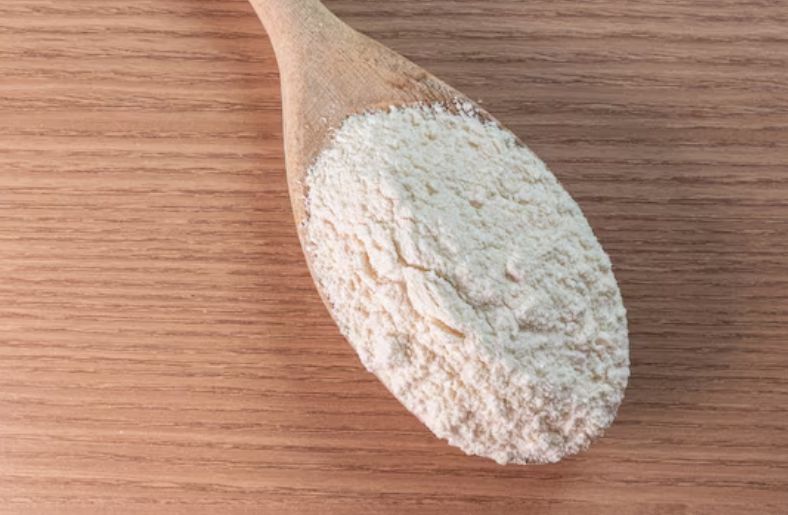
If you’ve handled tapioca flour before, you’ll notice its texture right away: soft, fine, and slightly gritty.
This texture helps batters and doughs come together smoothly, especially in gluten-free baking.
It holds moisture well because of its high starch content, giving your recipes structure and chew without the need for gluten.
Color and Texture in Use
Tapioca flour has an off-white to pale yellow color. It blends into most recipes without changing how your food looks.
You won’t have to worry about it dulling bright ingredients or darkening light-colored batters.
The flour feels light in your hands and mixes easily with both dry and wet ingredients.
Behavior When Cooked
Once heat is applied, tapioca flour changes fast. It swells and forms a thick gel that adds chew and bounce to baked goods and doughs.
It also creates a stretchy texture in flatbreads and dumplings.
In liquid-based recipes like soups and gravies, it acts as a smooth thickener that doesn’t clump or cloud your dish.
Neutral Flavor Profile
You won’t taste it. Tapioca flour has a bland, almost invisible flavor. That’s why it works well in both sweet and savory recipes, from cakes and cookies to sauces and stews.
It doesn’t overpower other ingredients or compete with your seasoning.
Solubility and Digestibility
Tapioca flour dissolves easily in water, making it good for batters, syrups, and gluten-free coatings.
It’s easy to digest and low in common allergens, which makes it a go-to for people with dietary sensitivities.
It’s also naturally grain-free, which works for paleo and Whole30-style diets.
Shelf Life and Storage
When stored in an airtight container in a cool, dry place, tapioca flour lasts a long time without spoiling.
It doesn’t absorb odors easily and remains free-flowing, so it’s simple to scoop, weigh, and mix whenever you need it.
Origin and Source of Tapioca Flour
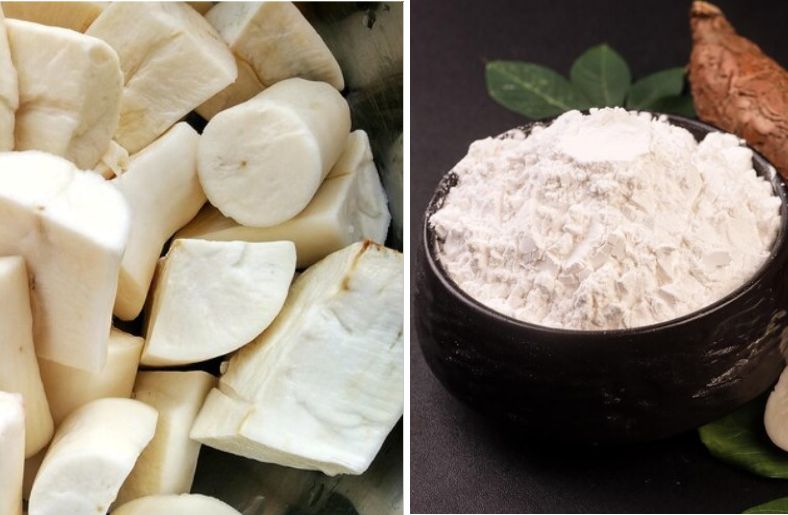
Tapioca flour comes from the cassava root, also known as Manihot esculenta. This root vegetable is harvested, cleaned, peeled, and ground into a wet mash.
The mash is sometimes fermented to reduce toxins and improve flavor. It’s then pressed to remove liquid and dried thoroughly before being milled into a fine flour.
Unlike tapioca starch, which is extracted by separating the pure starch content, tapioca flour uses more of the whole root, including some fiber and trace nutrients.
This gives it a slightly different texture and performance in cooking. You’ll see the difference in gluten-free baking and frying, where it adds body and chew.
The process keeps it natural and minimally processed, making it a useful option in recipes that need a clean-label, plant-based, grain-free flour made from a single source.
Nutritional Profile of Tapioca Flour
When you use tapioca flour, you’re mainly working with a carbohydrate-rich ingredient. Around 90 percent of its weight comes from carbs, making it a quick energy source.
It’s low in protein and fat, less than a gram per serving, and almost no fiber. That means it doesn’t keep you full for long on its own.
Tapioca flour also contains trace minerals like calcium, iron, and potassium, but in very small amounts.
You won’t rely on it for nutrients, but these traces still play a part in daily intake when used regularly.
Suitable for Special Diets
If you’re avoiding gluten, grains, or nuts, tapioca flour fits right in. It’s naturally gluten-free and safe for people with celiac disease or gluten sensitivity.
It’s also grain-free and nut-free, making it a go-to for paleo baking and allergy-friendly meals.
Best Used with Other Ingredients
Tapioca flour works best when balanced with nutrient-dense foods.
Since it lacks protein, fiber, and major vitamins, combine it with ingredients like eggs, legumes, or dairy to support a more complete meal.
You’ll get the structure and texture you want, without giving up on nutrition.
High in Carbohydrates
Tapioca flour comes from the cassava root and is packed with carbohydrates. It provides a quick energy boost, making it useful for athletes or those needing extra calories.
About 88 to 90% of its content is starch, with little protein or fat.
Low in Fiber and Protein
Unlike whole-grain flours, tapioca flour contains minimal fiber and protein.
With about 0.2 grams of protein and less than 1 gram of fiber per 100 grams, it doesn’t contribute much to satiety or muscle repair.
If you rely on it for baking or cooking, consider adding fiber-rich or protein-rich ingredients to balance your diet.
Lacks Vitamins and Minerals
Tapioca flour offers almost no vitamins and minerals. While whole grain and nut-based flours provide nutrients like B vitamins, iron, and magnesium, tapioca flour falls short.
To make up for this, pair it with nutrient-dense foods.
| Nutrient/Component | Amount per 100g |
|---|---|
| Calories | 358 kcal |
| Carbohydrates | 88.7 g |
| Protein | 0.2 g |
| Fat | 0.02 g |
| Dietary Fiber | 0.9 g |
| Sugar | 3.4 g |
| Calcium | 20 mg |
| Iron | 1.6 mg |
| Potassium | 11 mg |
How Tapioca Flour is Made
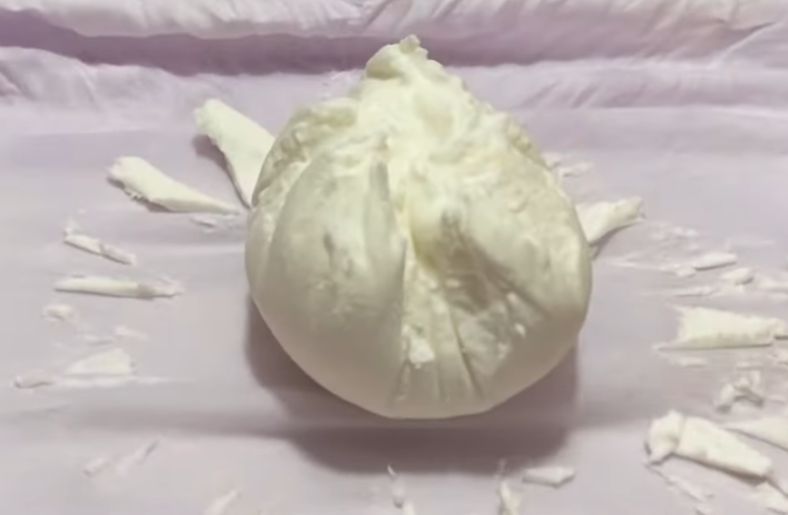
The process of making flour with cassava roots begins with harvesting mature cassava roots, which are then washed to remove dirt.
After cleaning, the roots are peeled to eliminate natural toxins found in the skin.
The peeled cassava is crushed or grated into a wet pulp and soaked in water to leach out impurities and reduce toxin levels.
Once soaked, the pulp is drained and pressed to remove excess moisture.
The damp mash is then dried traditionally under the sun or with industrial dryers for consistent results.
By the way, the drained water contains starch, which is a finer component of tapioca starch. This is the juncture where the flour and starch differ.
After drying, the hard, starchy material is ground into a fine powder.
The flour is sifted to ensure a smooth, even texture and then sealed in airtight packaging to keep it dry and fresh.
This method transforms raw cassava into a safe, gluten-free flour used in baking, thickening, and a variety of recipes. See the comprehensive post on how to make tapioca flour.
Related Post
- Tapioca What is it Made From and Made of?
- Instant Tapioca vs Tapioca: Are they the Same?
- How Tapioca Starch is Chemical-Modified
- What is Resistant Tapioca Starch?
- How to Make Tapioca Sticks
- Tapioca Syrup and Cassava Syrup: Are they the Same?
Benefits and Uses of Tapioca Flour in Cooking and Baking
Gluten-Free Baking
If you bake without gluten, you know the challenge of getting the right texture.
Tapioca flour adds chewiness and elasticity, making gluten-free bread, pancakes, and cookies feel more like their wheat-based counterparts.
It also locks in moisture, keeping baked goods soft and fresh.
Since it lacks gluten, it’s best used with other flours like almond or rice flour for better structure.
Thickening Soups and Sauces
Tapioca flour is a great substitute for cornstarch in soups, sauces, and gravies.
It blends smoothly with liquids, creating a lump-free, glossy finish.
Unlike cornstarch, which can turn sauces cloudy, tapioca flour keeps them clear, making it perfect for recipes where appearance matters.
Crispy Coating for Frying
For a crispy, golden crust, tapioca flour is a go-to ingredient. It coats food evenly, giving fried dishes a light crunch.
It’s widely used in Asian cuisine for crispy fried chicken and tempura. Mixing it with other starches can create different textures.
Chewy and Stretchy Textures in Desserts
Many chewy treats rely on tapioca flour. It gives Brazilian cheese bread (pão de queijo) its signature stretch, makes mochi soft and bouncy, and forms the perfect boba pearls for bubble tea.
Binding Agent in Meat and Veggie Dishes
Tapioca flour helps hold ingredients together in meatballs, veggie burgers, and dumpling fillings.
It also retains moisture, preventing dryness and making every bite more enjoyable.
Quick Energy Source
Since tapioca flour is mostly carbohydrates, it provides a fast energy boost. If you have an active lifestyle, it can help refuel your body after workouts or long days.
Related: Tapioca Starch as a Thickener
Tapioca Flour in Different Cuisines
Cassava flour plays a big role in traditional recipes that rely on its chewy texture and smooth finish.
Let’s take a closer look:
Brazil: Pão de Queijo
In Brazil, you’ll find tapioca flour at the heart of pão de queijo, a chewy cheese bread that’s crisp outside and soft inside. No wheat flour needed.
You mix tapioca flour with cheese, eggs, and milk to get that stretchy bite. It’s gluten-free by nature, making it a favorite even beyond Brazil.
Try switching up the cheese or adding herbs to match your taste.
Philippines: Kakanin and Other Treats
Filipino desserts like bibingka and puto use tapioca flour to bind ingredients and give them a smooth, springy feel.
These dishes, part of the broader family of kakanin, bring together rice, coconut, and tapioca to form comforting, bite-sized cakes.
If you’re into soft and sticky textures, you’ll enjoy what tapioca flour brings to the table.
Southeast Asia: Pearls and Kue
In Southeast Asia, you’ll notice tapioca flour in sweets like Thai tapioca pearls and Indonesian kue.
These snacks use the flour for chewiness, a quality that sets them apart.
You can steam, boil, or bake it into recipes that are satisfying to bite and easy to digest.
Western Kitchens: Gluten-Free Baking
If you’re baking without gluten, tapioca flour is likely in your pantry.
It adds stretch and moisture to cakes, cookies, and bread, making them feel more like traditional wheat-based versions.
You’ll usually mix it with other flours, like almond or rice flour, for structure and flavor balance.

How to Substitute Tapioca Flour in Recipes
If you’re using tapioca flour in cooking or baking, knowing how to substitute it correctly can improve texture and consistency.
Tapioca flour is gluten-free, but it doesn’t replace wheat flour in a one-to-one ratio.
Replacing Wheat Flour
Since tapioca flour is light and starchy, it works best when combined with other gluten-free flours.
A good mix includes:
- 1 part tapioca flour to 2 parts gluten-free flour (almond, coconut, or rice flour).
This blend helps maintain structure in baked goods.
Substituting Cornstarch or Potato Starch
Tapioca flour can replace cornstarch or potato starch as a thickener:
- Use a 1:1 ratio, but start with ¾ the amount and adjust as needed.
This is especially important in soups, sauces, and gravies where thickening strength varies.
Balancing Texture and Moisture
Blending tapioca flour with nut-based flour improves both texture and flavor:
- Almond flour adds moisture and density.
- Coconut flour lightens the mix, balancing the tapioca’s starchiness.
Since different gluten-free flours absorb liquid differently, you may need to adjust moisture levels in your recipes.
Testing different blends will help you find the right balance for better results.
Related: Tapioca Syrup: Benefits and Uses
Common Misconceptions About Tapioca Flour
Tapioca flour is widely used in gluten-free cooking, but several myths can cause confusion.
Knowing the facts will help you use it more effectively in your recipes.
Tapioca Flour and Tapioca Starch are the Same
Many people think tapioca flour and tapioca starch are the same. While both come from the cassava root, they are processed differently.
- Tapioca flour is made from the whole cassava root.
- Tapioca starch is extracted from the starchy part.
This difference affects how they work in recipes. Some brands label them interchangeably, but it’s best to check the packaging.
Can You Substitute it for All-Purpose Flour?
Tapioca flour does not work as a direct replacement for all-purpose flour. It lacks gluten, which provides structure in baked goods.
If you’re baking without gluten, mix tapioca flour with almond, coconut, or rice flour for a better texture.
Is it Lacking in Nutrition?
Tapioca flour is mostly carbohydrates with little fiber. Some assume this makes it unhealthy, but it depends on how you use it.
Pairing it with fiber-rich ingredients like flaxseed, chia, or whole-grain flours can balance its nutritional profile.
Understanding these misconceptions helps you get the best results.
Whether you’re thickening sauces, making bread, or creating chewy desserts, using tapioca flour correctly will improve your recipes.
Common Mistakes You Might Be Making with Tapioca Flour
Using tapioca flour can change the way your gluten-free recipes turn out, for better or worse.
To get the results you want, it helps to know what not to do.
Using Too Much Tapioca Flour
One of the biggest mistakes is adding too much. If you’ve ever ended up with a chewy or sticky texture in your baked goods, this could be why.
Tapioca flour holds moisture well, but on its own, it can make things too gummy.
What you can do:
Use it in combination with other gluten-free flours like almond flour, coconut flour, or rice flour.
This gives your baking a better structure and helps with texture.
Treating It Like a 1:1 Swap for Wheat Flour
Tapioca flour doesn’t act like regular wheat flour. It lacks gluten, so it doesn’t give your dough that stretch or help your cakes rise the same way.
What you can do:
When replacing wheat flour, adjust the ratio and mix it with other ingredients that help with binding, like eggs or xanthan gum.
Ignoring its Thickening Power
Tapioca flour is a strong thickening agent. If you’re working with soups, sauces, or fillings with high water content, adding it the same way you would cornstarch might not work.
What you can do:
Let it hydrate fully by stirring it into a small amount of cold liquid before adding it to hot mixtures.
This helps avoid clumps and makes the texture smoother.
Rushing the Cooking Process
Tapioca flour needs a little time to do its job. If you don’t let it sit long enough after mixing or don’t cook it through, you might not get the results you want.
What you can do:
Give your recipe the time it needs, especially if you’re baking or thickening something. Let it set properly before judging the texture.
How to Store Tapioca Flour and Keep It Fresh
When you buy tapioca flour, you want it to last and stay fresh. The way you store it makes a big difference.
Keep your tapioca flour in an airtight container. This keeps out moisture and prevents it from clumping or going bad.
You don’t want water or damp air getting in, moisture is one of the fastest ways to ruin it.
Store the container in a cool and dry place. Your pantry or a kitchen cupboard works well, as long as it’s away from heat sources like stoves or ovens.
Sunlight and heat can shorten the shelf life and change the texture of the flour. A steady, dry environment is best.
How Long Does Tapioca Flour Last?
When stored properly, tapioca flour can last up to two years.
Check the package for the expiration date, especially if you’ve opened it.
If you’ve transferred it into another container, label it with the date you first opened it.
Here’s what to look for before using it:
- Smell: A sour or rancid smell means it’s gone bad
- Color: If it’s yellowed or has strange spots, toss it
- Bugs: If you see any insects or larvae, don’t take chances—throw it out
Keep It Safe, Keep It Dry
To get the most out of your tapioca flour, store it properly. Keep it sealed, dry, and out of the heat.
This way, you’ll have it ready for your next batch of bread, boba pearls, or gluten-free pancakes.
Frequently Asked Questions on Tapioca Flour
What is tapioca flour?
Tapioca flour is a gluten-free starch extracted from the cassava root. It’s commonly used for thickening sauces, baking, and making chewy foods like boba pearls.
How is tapioca flour different from cassava flour?
Tapioca flour is pure starch, while cassava flour contains the whole root, including fiber. This makes tapioca flour smoother and better for thickening and baking.
Can tapioca flour replace wheat flour?
Tapioca flour isn’t a direct substitute for wheat flour. It works best when combined with other gluten-free flours to improve texture and elasticity in recipes.
What are the benefits of using tapioca flour?
Tapioca flour enhances texture, provides chewiness, and thickens soups and sauces. It’s gluten-free, making it ideal for those with dietary restrictions.
Conclusion
Tapioca flour is a gluten-free ingredient with many culinary applications.
Its ability to improve texture, provide elasticity, and act as a thickener makes it a staple in both traditional and modern kitchens.
While it differs from cassava flour, it remains a valuable alternative for those avoiding gluten or seeking a smooth, neutral-tasting starch.
Whether you’re making crispy coatings, chewy desserts, or fluffy baked goods, tapioca flour can enhance your recipes.
Understanding its uses and benefits ensures you get the best results while maintaining a balanced diet.
References
- Dr Axe: Tapioca Flour: The Best ‘Performing’ Gluten-Free Flour?
- Medical News Today: Nutrition facts about tapioca

Chimeremeze Emeh is a writer and researcher passionate about Africa’s most transformative root crop—cassava. Through his work at cassavavaluechain.com, he explores the entire cassava industry, from cultivation and processing to its diverse applications in food, health, and industrial use.
He also writes for palmoilpalm.com, where he shares his extensive experience and deep-rooted knowledge of palm oil, covering red palm oil, palm kernel oil, and refined products. His work there reflects his lifelong connection to agriculture and his commitment to promoting sustainable value chains in Africa.
Driven by curiosity and purpose, Chimeremeze aims to shed light on how cassava continues to empower communities, strengthen food systems, and link traditional farming wisdom with modern innovation.
